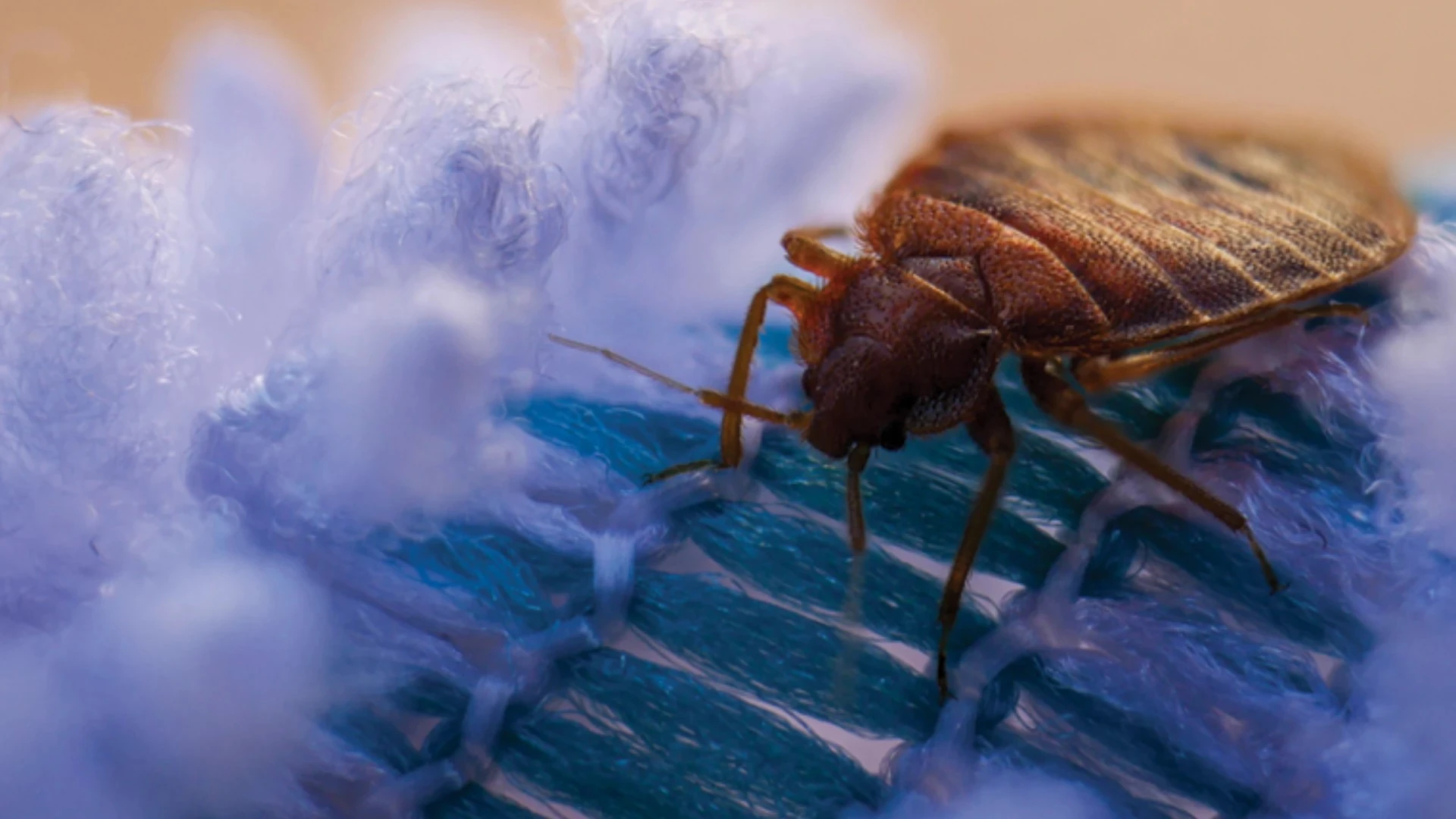The year 2003 was unusual for the pest control industry. Most of the eastern U.S. had more than its normal share of precipitation, but spring temperatures were cooler than normal. The upper Midwest and significant portions of the West continued extended drought-like conditions. The wildfires in Southern California were indicative of that area’s need for rain as was seen during the wildfires in Arizona and New Mexico in recent years.
This article discusses the relative prevalence of various pests in many areas of the U.S. It is difficult to fully cover every region of the country, but each region of the country is represented. The following pest preview and review is a compilation based on interviews with Terminix officials at various offices around the country, as well as other pest management professionals.
LOOKING AHEAD TO 2004. With all the variables involved, an accurate prediction of pest activity would be difficult at best, if not impossible. Even so, if certain weather conditions occur, pest activity could be greatly increased over 2003.
For example, much of the eastern U.S. continued to receive regular rainfall through the fall and if that continues into spring, the termite swarm could be significant (we can hope). A better than average swarm will be contingent on warm temperatures arriving on cue along with wet weather. From 2000 to 2002, the springs were fairly warm and swarms were fairly good and occurred earlier than normal. In 2003, cool weather prevailed late into the season and swarms were thwarted even though professionals from around the country reported finding termite alates in wood timbers above ground. We can hope that termite colonies, having missed last year, might feel "their biological clock ticking" and be anxious to swarm this year. Of course, assigning human attributes to insects would be stretching things, but warm, wet springs often generate excellent swarm seasons.
If California and other western states get some rainfall this winter and spring, termite and ant activity should be increased this spring and summer. A return to a hotter summer, reminiscent of 2000, should also result in greater pest activity. A few things are almost assured, however. Ants will continue to be the top structural pest in most areas. Odorous house ants will continue to expand northward and be a major pest to service professionals in the Midwest and Northeast. Bed bug calls will increase and flea calls will continue to be sporadic. Mosquitoes will be on the public’s mind again as the media reports cases of West Nile virus — predicted to be more prevalent on the West Coast in 2004. Most certain of all is the fact that the pest control industry won’t run out of cockroaches, ants, rodents, spiders, and other pests to chase after.
MOST WANTED LISTS. For the 2003 pest review, each respondent was asked to rate the top five pests in their area for both 2002 and 2003. Most of the time, these two lists were identical. Additionally, each person was given the opportunity to describe unusual pests that popped up in 2003.
Not surprisingly, ants of one species or another, were the No. 1 pest reported both years in most areas. Specifics will be detailed in the discussions later in this article, but in general, the top five pest ant species in the U.S., based on totals derived from these surveys, are (1) carpenter ants, (2) odorous house ants, (3) pavement ants, (4) Argentine ants and (5) fire ants. This was the same order as was reported in 2002.
Of course, the key pest ant differs with varying areas of the country. Fire ants are still the "queen" in most parts of Texas and some other areas, while in California Argentine ants are the primary pest species. Odorous house ants, however, continue to "climb the charts" as they have continued to increase as a difficult-to-control ant.
WEATHER CONDITIONS. The one thing people talk about to each other most often is the weather. It affects us all — some days more than others. The same is true for insects and other pests, maybe more so. Two key ingredients for pest proliferation are heat and moisture. Some areas of the country in 2003 had plenty of both; however, timing is everything. For example, the eastern part of the U.S. had plenty of moisture last spring, yet the temperatures remained cool well into and past traditional swarm seasons in many areas. As a result, the termite swarm season was the worst in many years. In fact, termite swarms were depressed across the entire country.
The East Coast drought that lasted several years is officially over as regular rainfall occurred throughout much of the year. The Midwest and Southeast also were graced with plentiful precipitation in most areas. The upper Midwest (e.g., Minnesota and Wisconsin) have had drought-like conditions for much of the past year and, as stated earlier, many western states long for more rainfall (and snow).
The summer was not overly hot as it might have been in some years past. For example, Texas had significantly fewer 100-degree days than in recent past. Yet, the summer was plenty warm for pests, and the warm fall temperatures extended pest activity into November in the Midwest and Northeast.
MARYLAND AND VIRGINIA. Ants continue as the No. 1 pest in the central Atlantic states, says Jerry Bukovsky, a technical specialist for Terminix. The area also experienced higher than normal activity for yellowjackets and rodents, especially mice.
The pest season was fairly good, with ants, wasps, and rodents making the phones ring. Flea calls again were few. Bed bug calls were sporadic, but when encountered, infestations proved difficult to control. Like last year, calls for overwintering pests, such as lady bugs, cluster flies and boxelder bugs, were about average although more calls occurred regarding stink bugs and leaf-footed bugs invading homes.
CENTRAL OHIO. Bill Gausch of Terminix in Columbus, Ohio, listed the top pests in his area as termites and carpenter ants, although he notes calls for the latter were a bit less than normal. Paper wasps (Polistes dominulus) and odorous house ants continued to be a problem.
Carpenter bee activity increased as it did in much of the eastern Midwest. As was seen on the East Coast, lady bug activity was drastically down last year after several years of steady increase. Yellowjacket activity rebounded in 2003 after being down the previous year. Overwintering pests, such as lady bugs and cluster flies, were markedly increased last year, due likely to the wetter conditions through much of the spring and summer. Lady bugs were especially "bad" last year. Gausch also notes receiving numerous calls regarding mosquito control in the area.
KENTUCKY AND INDIANA. Dr. Mike Potter of the University of Kentucky said that last year’s pest season was similar to recent years. Odorous house ants continued to be an increasing concern and also difficult to control for many professionals. This ant species is also becoming more prevalent in southern and central Indiana. Termite swarms were down through this area although plenty of termites can be found by a diligent inspector. Dr. Potter reports getting calls about bed bugs and his discussions with pest professionals indicate difficulty in gaining control in many cases. He is starting to see the paper wasp, Polistes dominulus, occur in Kentucky. Many professionals may be misidentifying this wasp as it is marked similarly to yellowjackets.
Dr. Potter also stated that lady beetles were particularly bothersome last year, as were carpenter bees. He also noted ticks were plentiful, in particular the lone star and American dog ticks; however, fleas calls are still down. After last year’s scare with West Nile virus in horses, the number of cases last year in both humans and horses were down in eastern Kentucky.
MISSOURI. Like other regions previously discussed in this article, the odorous house ant is the key pest, notes Tom Moser, region service manager for Terminix. Pavement ants were the No. 2 pest, followed by carpenter ants. In fact, Moser reported ant activity to be increased even over 2002’s busy season. He also states that various spiders, including the brown recluse spider, were abundant last year, resulting in numerous calls from customers. The termite swarm season last year was poor.
Lady beetles were a real problem last year, more so than other overwintering pests, such as boxelder bugs or cluster flies. Yellowjacket and hornet activity was about normal as was rodent activity. His offices did not receive many bed bug calls nor calls to control fleas or mosquitoes.
MIDSOUTH. The odorous house ant is still the primary ant pest in the Midsouth, but the imported fire ant is an increasing problem in West Tennessee and central and northern Arkansas. Other ant species of importance are little black ants and acrobat ants. Dave Pence of Terminix Commercial in Memphis reports ant activity was increased last year over recent years. Like most of the eastern United States, the termite swarm was poor in the spring of 2003.
Brown recluse spiders remain a significant pest concern for many Midsouth
homeowners and cases seem to continue to rise each year. Last year also brought an increase in mouse and roof rat activity, according to Pence. He also received a considerable number of calls to control bed bugs but felt, except in a few cases, these were not too difficult to control.
Unlike the recent past, lady beetle calls were down and yellowjackets "were not much of a problem." In commercial food establishments with questionable sanitation, Pence reports encountering more phorid and fruit fly infestations than in recent memory. The dark-eyed fruit fly is increasingly being encountered in a variety of restaurants and bakeries throughout the area.
GEORGIA. In the La-Grange, Ga., area, Vernon Mills of Term-inix notes Argentine ants as his biggest concern followed by spiders, carpenter bees and German cockroaches. In 2002, however, American cockroaches were his No. 2 pest followed by millipedes. He thought the ant activity, however, was less than it has been in recent years. He did report, however, receiving more flea calls in 2003.
Like David Pence in Memphis, Mills reports mouse activity was up throughout the year, which is unusual for his area of the state. Calls for boxelder bugs and cluster flies were also up during the fall of 2003.
ALABAMA. Two Term-inix professionals commented on pest activity in this state: Richard Smith from Huntsville in the north and Mike Weed from Mobile in the south. Smith notes Argentine ants and fleas to be the top two pests in his area while Weed reported peridomestic cockroach species and ants in general to be the key pests.
In northern Alabama, ant activity was considered greater than normal while less than in recent years in the south. Both men reported receiving bed bug calls last year, but not many. As might be expected, Weed said there were little problems with lady beetles in southern Alabama, while Smith said invasions were greater than normal in the northern areas.
Both reported higher mouse activity last year, especially the late summer. Yellowjacket activity was increased last year in the south and was about normal in the northern part of the state.
TEXAS. In 2001 Mike Kilpatrick, Terminix technical specialist, listed the imported fire ant and Argentine ant as his top pests. In 2002, he noted more problems with the odorous house ant. This past year, Jim Billings, region technical specialist for Terminix in Texas, listed five ant species as the top five pests (odorous house ants, fire ants, pavement ants, Argentine ants and carpenter ants), although he considered the ant activity to be about normal for the area. Rodents and wasps were not too much of an issue last year over recent years, and calls for mosquito control were not prevalent. He reported his offices receiving a couple dozen calls for bed bugs. He remarked that the year was fairly average pest-wise except that termite swarms were down considerably.
COLORADO. Colorado was dry last year through much of the tear except during spring. Judy Black, an entomologist with Steritech in Denver, and two Terminix professionals, Bob Chauvin III of Denver and Scott Baker of Colorado Springs, provided input for this area. Black, whose company is commercially focused, reports different key pests than the Terminix professionals whose offices are primarily residential.
For Steritech, the house mouse was the No. 1 pest followed by house flies and pavement ants. Black notes that the odorous house ant is being noticed more but ant activity, in general, was about the same as seen in 2002. She received bed bug calls but probably fewer than 10 in all, and she found the infestations not too difficult to control. Cluster flies and boxelder bugs were the overwintering pests of note last fall, and yellowjacket activity was about normal, in her opinion.
Spiders and pavement ants ranked as the top two pests noted by Chauvin and Baker. Both reported greater than normal carpenter ant activity last year. Chauvin noted increased rodent activity in Denver while Baker said rodents were about normal further south in Colorado Springs. In Denver, bed bug calls were more numerous, totalling more than 20, while in Colorado Springs, Baker received fewer than 10 calls. Yellowjacket calls were greater than normal according to both Terminix professionals. Other points of interest include that Chauvin noted roof rats in rural homes while Baker described a carpet beetle infestation traced back to more than 100 pounds of dog food secreted away over the years by mice in a ceiling of a home.
PACIFIC NORTHWEST. Several Terminix offices offered their observations for the Seattle area and Idaho. In Seattle, odorous house ants, carpenter ants, and "moisture" ants (Lasius spp., Acanthomyops spp.) were the most important pests. Rats, mice and spiders were also considered key pests. Flea calls were up last year. The two offices also reported a number of bed bug calls, a number of which proved difficult to control. Lady beetles, cluster flies and stink bugs were reported as overwintering pests.
In Boise, the Terminix office reported a fairly good year for subterranean termites and noted carpenter ants were more active than last year. Carpenter bees and powderpost beetle activity was also up. Odorous house ant activity was higher than in past years. Like Seattle, fleas were more prevalent over past years, although not significantly. Mouse activity was increased last fall and cluster flies and boxelder bugs were the key overwintering pests.
ARIZONA AND NEVADA. In Tucson and Phoenix, Terminix offices reported ants as the key pest with activity increased over last year. Scorpions and German cockroaches were also notable pests. Flea calls were uncommon, but 10 to 20 bed bug calls were received by the two offices. In some cases, the bed bug infestations proved difficult to eliminate. Rodent activity in Tucson was considered normal but was higher in 2003 in the Phoenix area. Tucson reported receiving a number of inquiries about mosquitoes, while the Tempe branch noted scorpions calls were up over recent years.
Glenn Pontiff, branch manager for Terminix’s Las Vegas office, listed oriental cockroaches, Argentine ants and German cockroaches as the top three pests in his city. He felt the Argentine ant activity was not as great as last year, possibly due to the even drier than normal weather experienced in 2003. Roof rat and mouse activity was high during the fall. Earwigs were also an unusually prevalent problem. His office also received 10 to 20 bed bug calls.
In Reno, Terminix branch manager Gary Goodmanson listed pavement ants as the top pest followed by black widow spiders, carpenter ants and mice. Carpenter ant activity was reported as higher than usual, but ant activity, in general, was about the same as last year. Flea calls were few as were requests to control bed bugs. Rodent activity was normal.
The author is manager of technical services for Terminix International, Memphis, Tenn. He can be reached via e-mail at shedges@pctonline.com.

Explore the January 2004 Issue
Check out more from this issue and find your next story to read.
Latest from Pest Control Technology
- Rentokil Terminix Expanded in Key Markets with 2024 Acquisitions
- In Memoriam: Joe Cavender
- Certus Acquires Green Wave Pest Solutions
- Liphatech Adds Alex Blahnik to Technical Team
- Do the Right Sting: Stinging Insect Identification, Management, and Safety
- VAGA's 8th Annual Veterans Thanksgiving Appreciation Dinner
- Clark's Blair Smith on the Response to Increased Dengue Fever Cases in Southern California
- WSDA, USDA Announce Eradication of Northern Giant Hornet from U.S.





